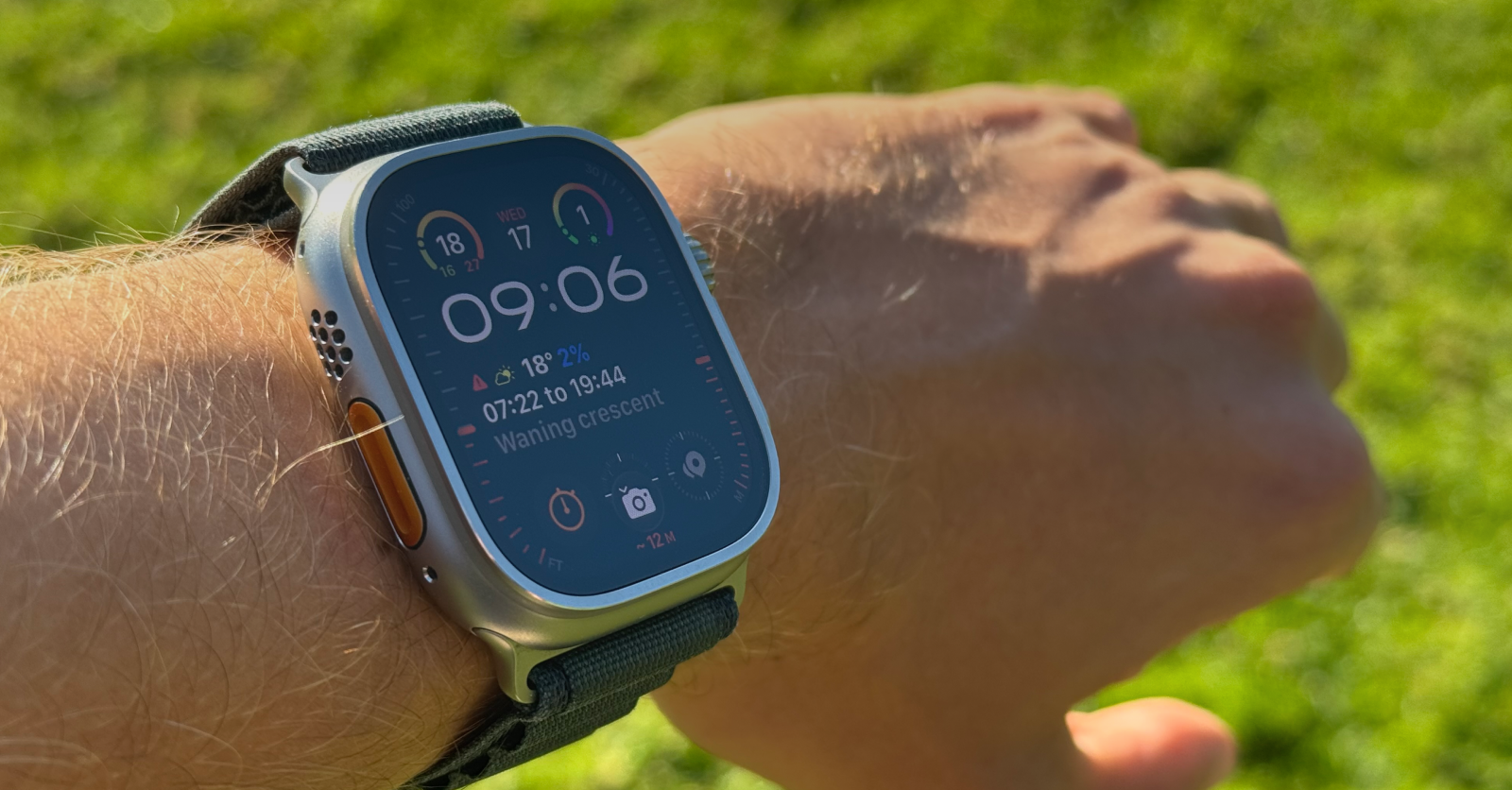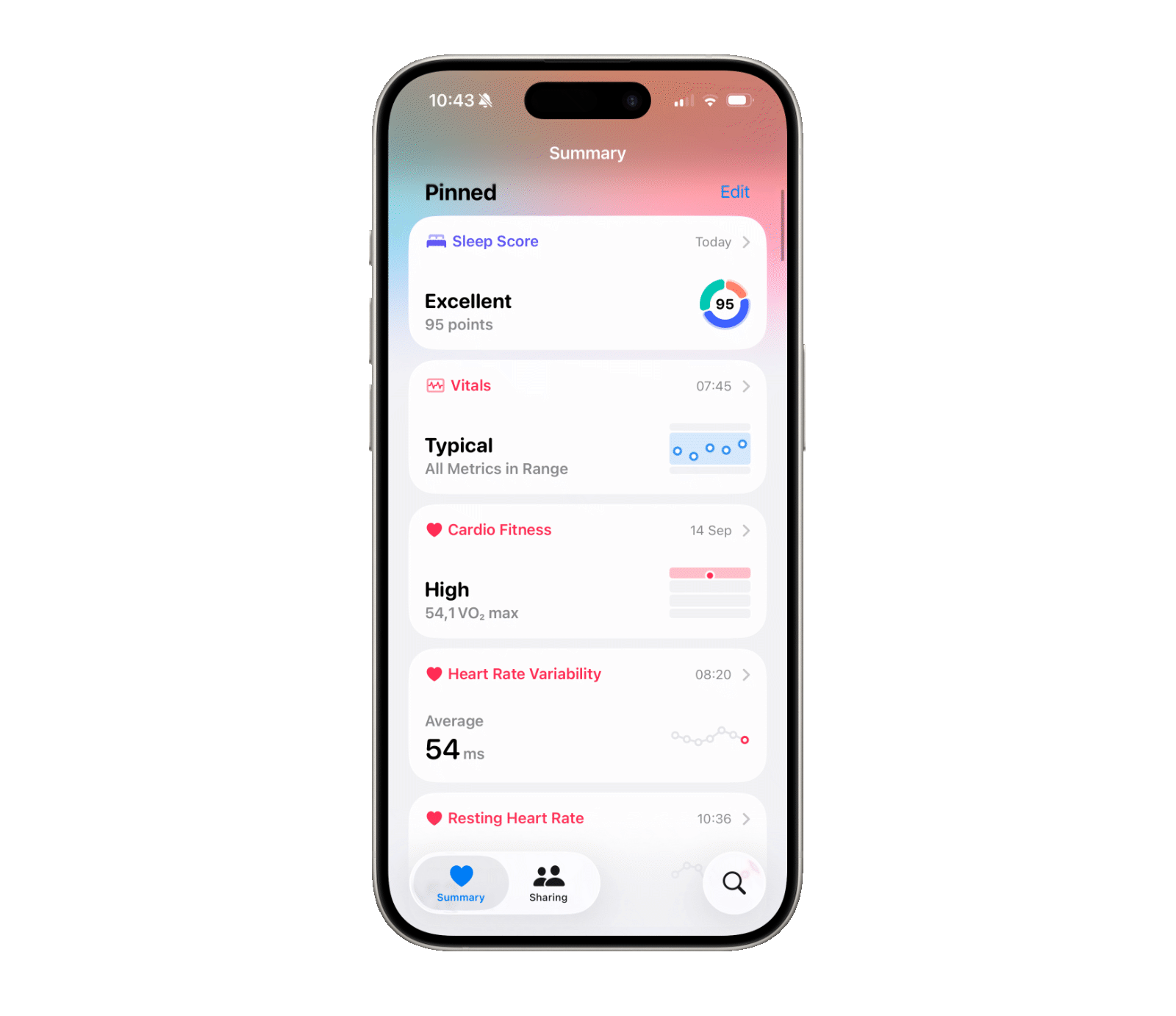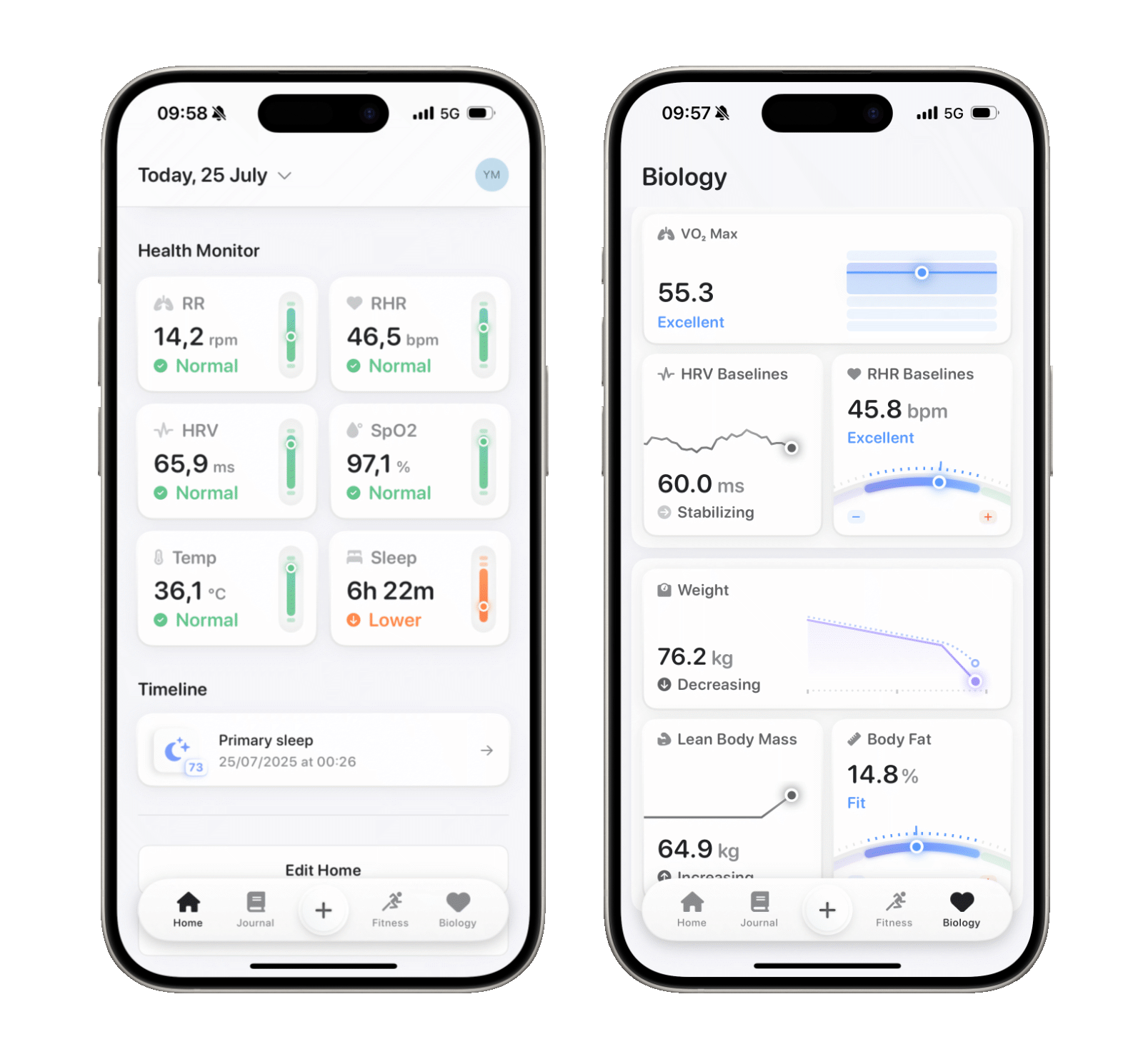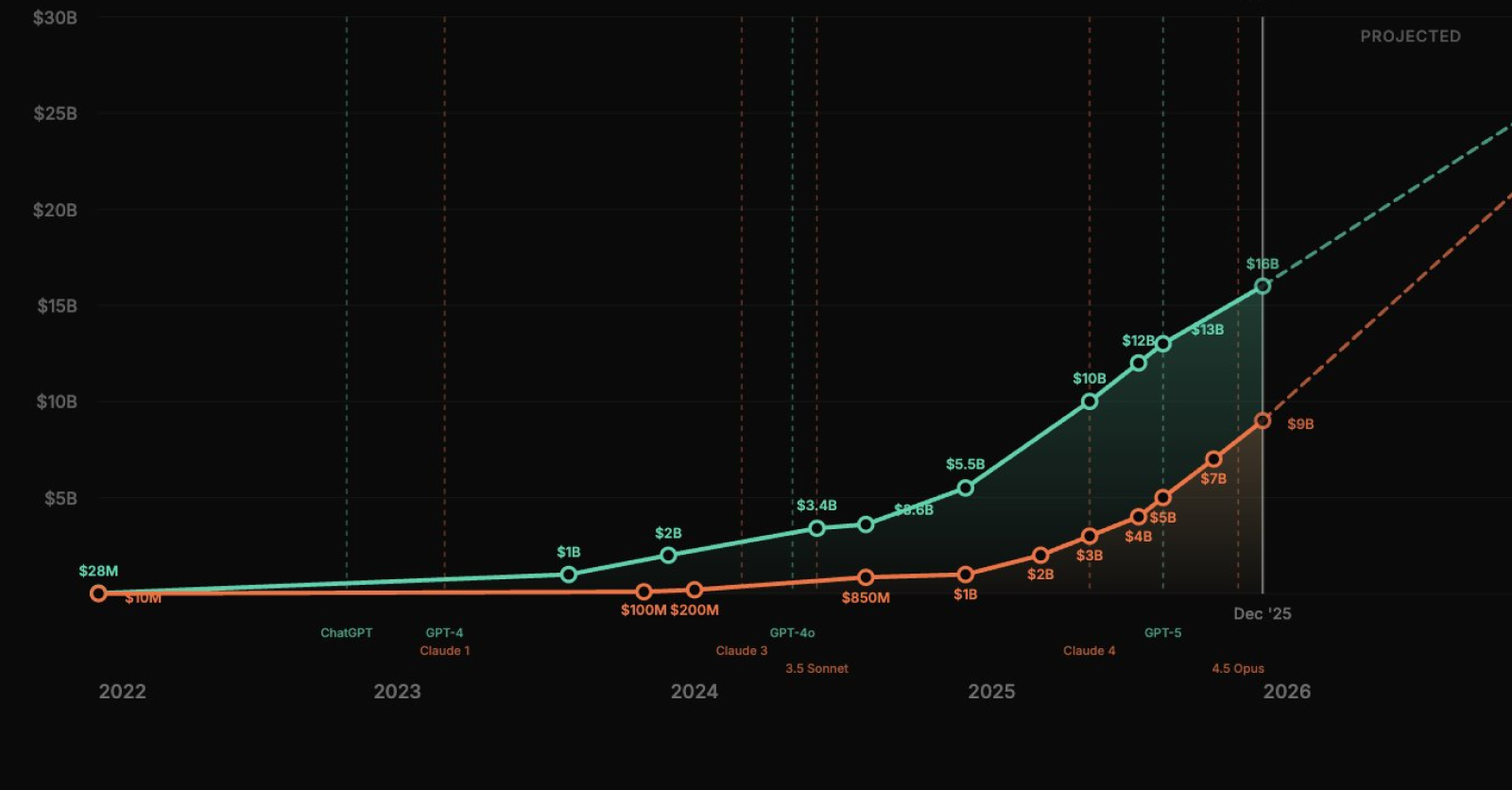Apple Watch is Better than Whoop and Oura
Apple Watch is a great health tracker. And you can just use it, especially if you already have one, instead of buying Whoop or Oura.

Last week, Apple relented and introduced the Sleep Score for the first time since adding sleep monitoring to the Apple Watch. This is huge, since they were always extremely careful about giving out assessments like this.
Apple dominates the concept of personal fitness trackers, but other options have been getting a lot more attention, right to the point where you can pick up an Oura at Walmart and a half of the F1 paddock wear a Whoop through the race.
Unfortunately, both of these devices come with a hefty subscription and are basically unusuable without it; Oura provides just a bit of data but that’s the least they could do to avoid saying it doesn’t work.
Oura Gen4 costs $349 and then you have to shell out $69.99 each year to get access to most of its functions. Whoop is technically free but requires a subscription for anything and the cheapest options is $199 a year.
Here’s the total cost of ownership by year for all three devices.

As you can see, owning a Whoop get really expensive.
Three years ago I switched to mechanical watches but I still use Apple Watch for training and they came in handy when I picked up running. More recently, I started having troubles with my sleep, so now I put it on every night.
Here’s what I noticed: Apple Watch is actually a great health tracker. And you can just use it, especially if you already have one, instead of buying Whoop or Oura.
Tim Cook once said:
One day Apple would be remembered for their improvements to the global health, not the iPhone.
200 million people already have an Apple Watch and that’s exactly why it might be the best fitness tracker for them (and for you). Even if you don’t actually own an Apple Watch, it still will be the cheapest option. And unlike both of its alternatives, it’s an actual fitness tracker you can use for running, cycling or any other activities that require as screen. It also tells time (HUGE!).
There are two primary reasons many choose alternative trackers which come down to wearing it 24/7 and the data it provides. Some people just don’t like wearing a watch to sleep. Personally, I’m perfectly comfortable even with my Ultra. What moves the needle is choosing the right strap: get one a nylon one, it’s way less obtrusive than silicon or steel.
Now the second point, which is all about the app experience and the data it provides. For some, Apple Watch just doesn’t track what they want to see. Here’s where Whoop and Oura come in. You get sleep scores. Metabolical age. How much do you need to train to properly exhaust yourself. An exact mathematical representation of your sleep, exertion and recovery: “your sleep score is 74% and you are recovered by 69%”.
Do these numbers actually mean anything? Nobody knows. I mean, there is some science behind this and you can assign an arbitrary score to a combination of various body metrics, but there’s a reason Apple is cautious about this. In iOS 26, they’ve finally introduced Sleep Score. Today, Apple gave the score of 98, while an alternative app Bevel calculated 68 based on the same data. Have to say, I feel more like 68.
What Apple does well is highlighting the outliers. If you have a regular night of sleep, all Vital signs stay nice and purple. Had too much to drink? You will see HRV going down, RHR and body temp rising, oxygenation falling, and the app will warn you abut this. But Apple really doesn’t want you to fret about the numbers daily and I think that’s the right approach.
One time on a vacation the Watch showed me I had an elevated temperature during the night. The very next day it flagged I had increased respirations. And on the third day I woke up with a cold. The Watch detected something two days in advance.
This is why I love Apple’s no-nonsense approach. Flag important things, but don’t create more anxiety and metrics to monitor each day. What I don’t like is how Apple Health app set up by default. If you do want those metrics, you have to adjust it yourself.
Here’s how it looks for me:

Apart from anything collected by Vitals, here’s what I look at:
- HRV is Heart Rate Variability, a metric that shows whether your heart is controlled by sympathetic or parasympathetic nervous system. The line might be more or less flat, but if you train 2-3 times a week you’d see ups and downs. There were a few times when I felt great in the morning but struggled at the evening run when my nightly HRV was low. After some training, a higher HRV is good.
- Resting Heart Rate shows how powerful your heart is. The stronger it is, the rarer it needs to beat to deliver enough oxygen. The more you can get it down through training, the better (until you start triggering hospital equipment). Apple Watch can warn you if your RHR falls below 40 during the night but I had to disable this feature because it would just wake me up, which as I understand is quite common among runners.
- Cardio Fitness (VO2Max) is your body’s capacity to deliver and process oxygen. Generally, the higher is better, but everyone has a different baseline and what you should hope for goes down with age. VO2Max is defined by your heart’s power, lung function, the volume of hemoglobin, the amount of capillaries in your muscles, and many others things. If your cells don’t have enough oxygen, they will produce energy through a different metabolic cycle that produces lactic acid (not a good feeling).
- Blood oxygen and wrist temperature are good predictors of your physical condition. If they divert from the baseline, there’s a good chance you might be falling down with a virus.
I don’t spend too much time thinking about these, but it’s nice to see how my training and good sleep schedule improve the underlying things.
What if you still want to have the numbers and some proactive coaching on top of this?
Thankfully, Apple Watch is a platform. It can track so many things and pump that data into the Health app, which is then available to third-party apps and services.
The two most popular options are Athlytic and Bevel. If you want to get an analysis of your sleep, strain scores, you can try both. Yes, both carry a subscription, which changes the financial equation. Still, even in this case Apple Watch remains a very competitive and acts as a watch. I think Bevel is better. It seems to be a very close analogue of Whoop and its metrics. The subscription is $5.99 and you get some basics without it.

P.S. My girlfriend read this and said she still wants an Oura (sigh).




